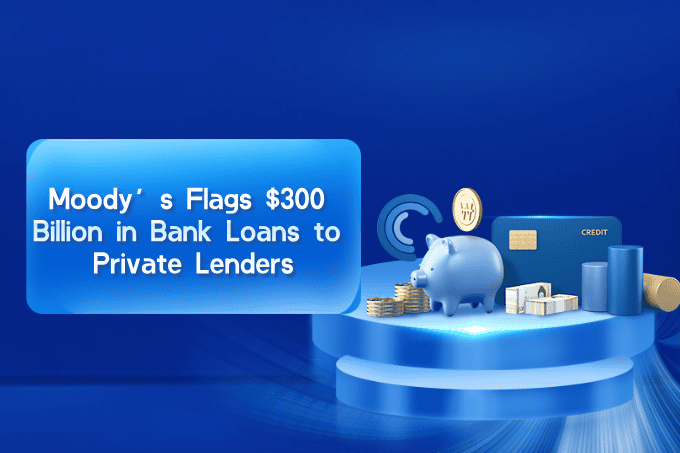
Private lending has been Wall Street’s favorite side hustle for years, but now it’s getting a lot more attention—and not all of it good. According to a fresh Moody’s Ratings report, U.S. banks had racked up about $300 billion in loans to private lenders by the end of June. That’s right: the same banks warning about risks in private credit are also the ones fueling its growth.
Banks Feeding the Beast
Moody’s, citing Federal Reserve data, said total lending to non-depository financial institutions—a bucket that includes hedge funds, private equity firms, pension funds, and private credit shops—has ballooned to $1.2 trillion. That’s more than one-tenth of all bank lending.
Leading the charge is Wells Fargo (WFC), with roughly $60 billion in exposure, which Moody’s classifies as "commercial credit." That category covers loans to private credit funds, direct lenders, business development companies (BDCs), and securitized products like collateralized loan obligations (CLOs).
Banks argue this is a safer way to play the private credit boom—better to lend to the lenders than to take on high-yield or unrated borrowers directly. But as Moody’s points out, the line between "safer" and "systemic risk" can get blurry fast.
Private Credit Under the Microscope
Private credit has exploded over the past decade, with U.S. assets tripling. But with growth comes scrutiny. Investors are increasingly worried about underwriting quality and due diligence. The recent collapses of Tricolor Holdings (a subprime auto lender) and First Brands Group (an auto parts supplier) have only heightened concerns.
As one credit strategist put it, "When the tide goes out, you don’t just see who’s swimming naked—you see who forgot their floaties."
Big Names, Big Exposure
It’s not just Wells Fargo. JPMorgan Chase (JPM) leads in sponsor lending, with about $47 billion in credit lines to private equity funds. Across the industry, banks’ exposure to private equity has climbed to $285 billion.
Moody’s notes that while banks are technically financing intermediaries, they’re still on the hook if private lenders stumble. And with private credit now a $1.7 trillion market, even a small crack could ripple through the system.
Why It Matters
For banks, private credit lending has been a way to juice returns without directly loading up on risky borrowers. For regulators and investors, though, it’s a growing blind spot. Unlike traditional bank loans, much of this activity happens outside the public eye, making it harder to assess real-time risks.
And let’s not forget the CLO market. These complex bundles of leveraged loans are already showing signs of stress in lower-rated tranches. If spreads widen at the top tier, it could be a flashing red light that private credit risks are spilling into the broader financial system.
The Bottom Line
Moody’s latest report makes one thing clear: U.S. banks aren’t just bystanders in the private credit boom—they’re key players. With $300 billion in direct exposure and $1.2 trillion in total lending to non-bank institutions, the stakes are high.
For now, the party goes on. But as history has shown, when banks and shadow lenders dance too close together, the music can stop suddenly—and nobody wants to be left without a chair.
